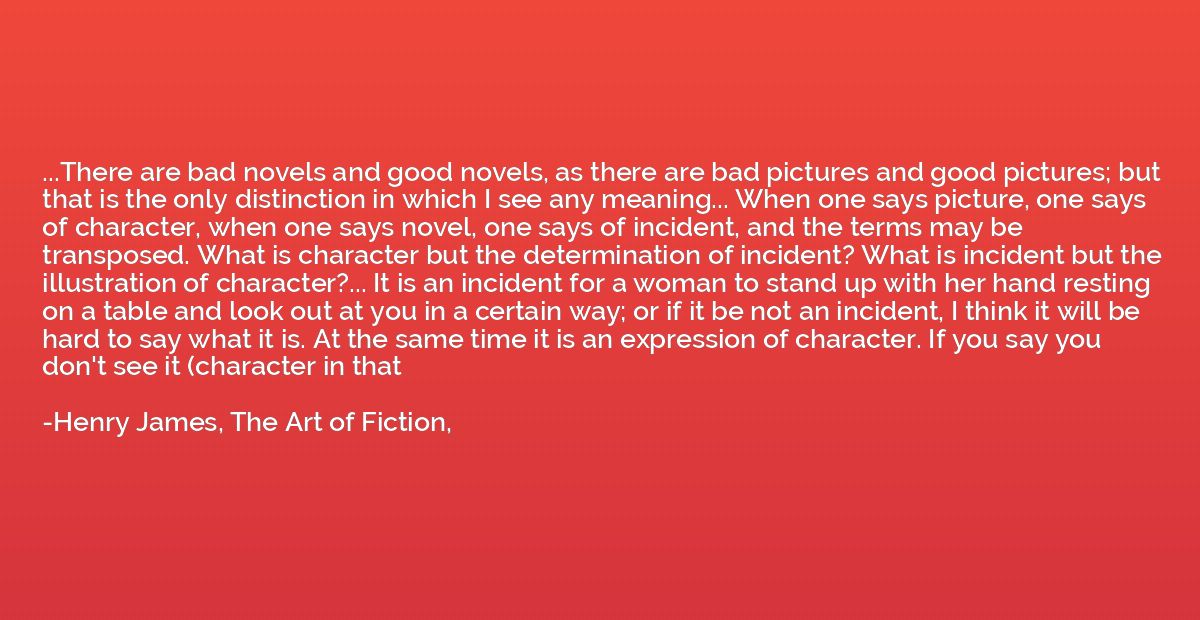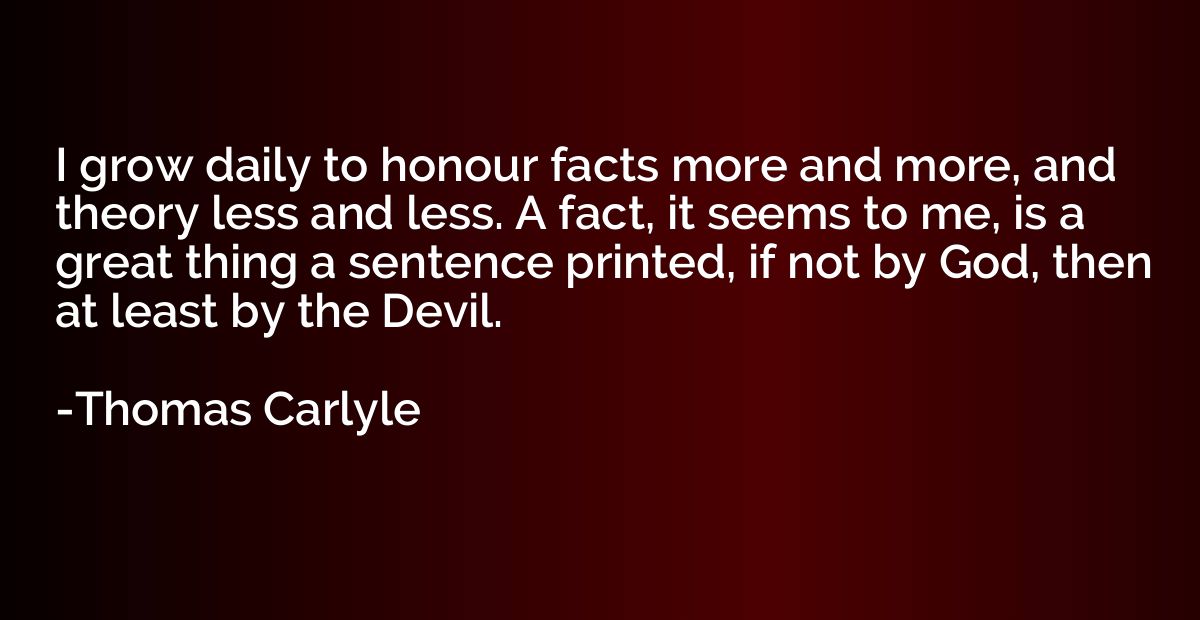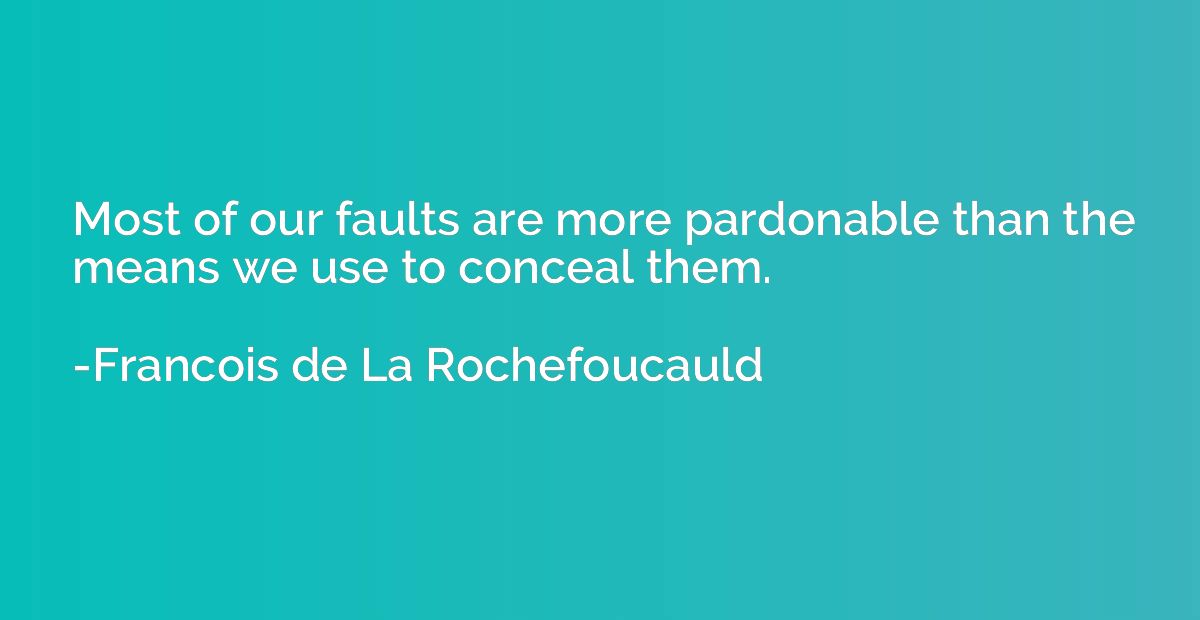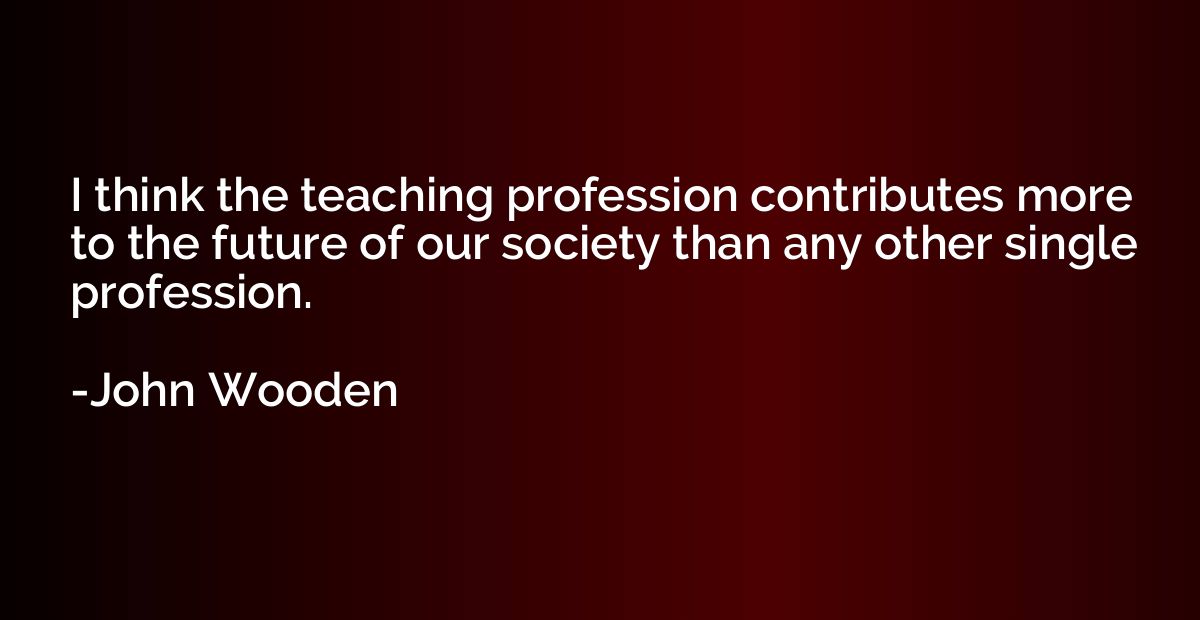Quote by Henry James, The Art of Fiction,
...There are bad novels and good novels, as there are bad pictures and good pictures; but that is the only distinction in which I see any meaning... When one says picture, one says of character, when one says novel, one says of incident, and the terms may be transposed. What is character but the determination of incident? What is incident but the illustration of character?... It is an incident for a woman to stand up with her hand resting on a table and look out at you in a certain way; or if it be not an incident, I think it will be hard to say what it is. At the same time it is an expression of character. If you say you don't see it (character in that

Summary
The quote emphasizes that when it comes to novels and art, the only meaningful distinction is between good and bad. The distinction between novels and pictures is blurred because both are ultimately about the interplay between character and incident. Character determines incidents, while incidents illustrate character. The quote suggests that even seemingly mundane incidents, like a woman standing by a table in a certain way, can be significant and reveal character. In essence, the quote underscores the importance of the interaction between character and incident in both literature and art.














